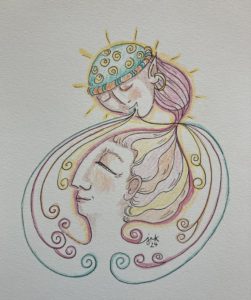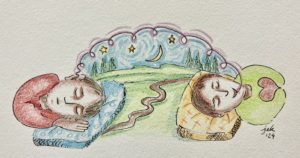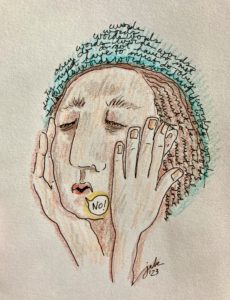
-Artwork © 2024 Jan Ketchel
The word placebo is Latin for, I shall please. We have within us a power that literally fills our suggestions. This power is situated in what has been called the subconscious mind. In subtle anatomy, the subconscious mind is part of the soul, or astral body, that exists independently of its host, the physical body.
Specifically, the subconscious mind houses the desire body, the home base for Yin, the receptive feminine center of our being. If a suggestion is accepted by the desire body, it is true conception, and the miracle of creation begins. The desire body has the magnetic force to draw to it and assemble physical reality to please, or make substantial, that which we suggest to it.
Ironically, science has designated placebo as that which has no real effect upon physical reality, seeing its impact as a kind of mental aberration. Science uses placebo in experimentation as a control to determine whether a real agent has therapeutic value, or is merely a product of the mind, i.e., is a placebo effect.
So, if the mind alone is capable of eliminating symptoms and keeping one alive, it doesn’t count as real cure. The miracle of mental healing is simply placebo, not genuine healing. I find it rather stunning that the rational mind has completely forsaken and denigrated the subconscious mind’s power of creation and healing, even when directly confronted with irrefutable evidence of its benefits.
The shamans of ancient Mexico understood this loss of magic, and consequent polarization within our astral energy body, as the product of a predatory, inorganic entity that feasts upon the emotional dysregulation that this struggle generates. We are constantly in an inner battle between embracing our magical potential versus the limits of our dominating mental fixation of rationality.
This battle of bipolarity is everywhere apparent in our world, as the irrational has grown to outlandish proportions in its quest to unseat the controlling rationality of civilization. We are actually on the cusp of seeing the irrationality of lies become the accepted ruling order of the world.
Reason is an extremely valuable tool for navigation, but when it strips us of our divine creative healing potential it can only generate sterility. This inner struggle for redemptive balance is the crossroads every human now faces, both within the psyche and without, in the outer world.
Author Sue Watkins published a memoir in 2001 that reviews her relationship with the psychic Jane Roberts (Speaking of Jane Roberts). In it, she reveals for the first time a miraculous physical healing she experienced in a self-hypnosis exercise undertaken with Jane and a few other people.
Back in late 1969, Sue had been suffering from an extremely irritating STD called Trichomoniasis. Putting herself in a calm alpha brainwave state, she gave herself the suggestion that the body would heal itself. Immediately the discomfort disappeared and, as she immediately discovered, upon self-examination in the bathroom, the physical evidence of infection had completely cleared from her body as well.
Sue’s battle with her own inner rationality, and fear of the rational critical police, had her actually cut this vignette, at the last minute, from her book, Conversations with Seth, published in 1980. It would take another 20 years for her to accrue the confidence to document this physical healing that had occurred solely through self-hypnosis.
The key to success with self-hypnosis is to just do it. Despite the limiting judgment of the rational mind, one is always free to get relaxed and present a suggestion to the subconscious mind. Say it many times and see what happens. At the same time, don’t attach to the outcome. Allow that center that says, I Shall Please, to do its job, as it sees fit, without pressure.
Obviously, with respect to medical issues, one should fully avail oneself of medical support. Also, realize that suggestions can be manifested that are not best for one’s personal evolution, nor for that of the world. Greed, for instance, can manifest just as well as altruism.
Always intend the greater good with all suggestions. Restore the magic to both the creative and rational minds of the soul.
I shall please,
Chuck




